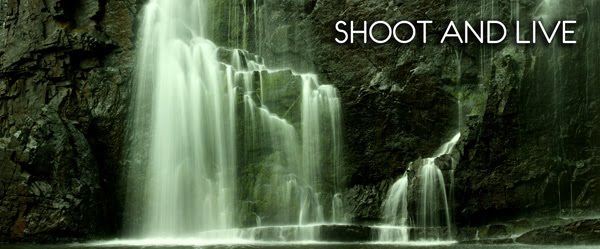White Balance: The quality and colour of light sources can differ extremely, and affect your photos in terms of saturation and colour. This is usually measured in temperature - ranging from about 3000K (bluish) to 7000K (orangey/red). For example, light coming from sources like candles or orange streetlights has a very high temperature, and light in the shade on a sunny day has a very low temperature. Modern digital SLRs have decent auto white balance - which I use 80% of the time, but sometimes manual control of white balance is needed. White balance settings on DSLRs aren't too difficult to work out - when it's cloudy, it's a good idea to have the white balance set on 'cloudy' mode, etc. The tungsten setting is great for scenes lit by candles or orange streetlights. Manual control will always give you a more natural result.
Exposure (if not shooting on Manual): This is quite basic, and on modern DSLRs is usually represented as a wheel going from -2 to +2. When you are shooting in any mode other than manual, the camera has to choose settings for you. The exposure wheel is you giving the camera somewhere to base its decisions on - it's usually best to have this at 0 (right in the middle) on cloudy days and indoors, or -2/3 on a sunny day. The luxury of digital is that after a photo is taken, you can see the result straight away. If the photo was too bright, maybe wheel the exposure down a few thirds. If it was too dark, do the opposite. Easy but important!
Autofocus Mode: Three basic modes here, One shot, AI focus and AI servo. One shot focus is when the camera locks on to a point and will hold the focus there - good for landscapes, portraits and pretty much anything that doesn't move. AI servo focus will constantly keep changing the point of focus as the subject moves - perfect for sports, wildlife or anything moving. AI focus is more of an in between automated mode. The concept is that when something is still the focus will stay still, when something is moving the focus will move with the subject for you. Sounds great in theory, but I've found it sometimes unreliable and easier just to switch been one shot and AI servo.
Autofocus Points: This is an important one which many people miss. Looking through the viewfinder you can see a number of points that will light up when something is focused on. By default, the camera has these on automatic selection, trying to focus on the closest thing to the camera. In many forms of photography, however, the closest thing is not always what you want the focus on. The following picture for example:

If I had kept the camera on automatic focus point selection, the clowns in the front would be in focus and the photo wouldn't be anywhere near as cool. Digital SLRs give you the option of choosing a unique point with which to focus. On canons this is the button on the very top right of the camera. Make sure you have a practice with this - as focus is so important with photography. Shooting a portrait, for example, common practice is to always nail the focus on the eyes. If the camera is on auto-focus-point select, the photo will probably be focused on the nose and be nowhere near as effective. Try it for yourself!
Drive Mode: This is pretty basic, you have single shot, which will just take one photo. You also have continuous mode, which will take photos at quite a speed, depending on your camera. SLRs can go anywhere from 3-10 photos per second. Continous drive mode is a must for sports. I prefer to have continuous mode on 100% of the time, so I never miss a moment.
The best way to master all these is practice practice practice, just go out and shoot, play with them individually, play with them together, thats how you learn!
Good Luck
Cheers
Tal

No comments:
Post a Comment